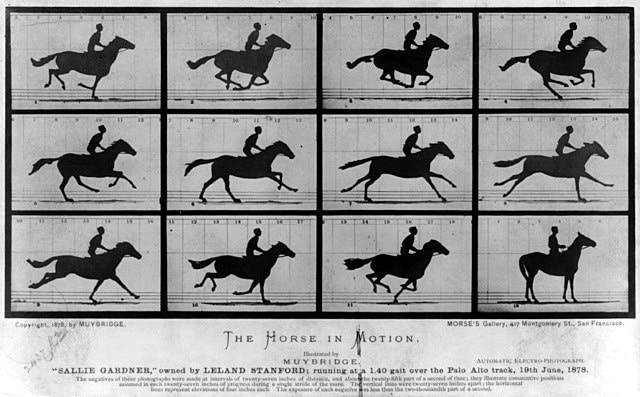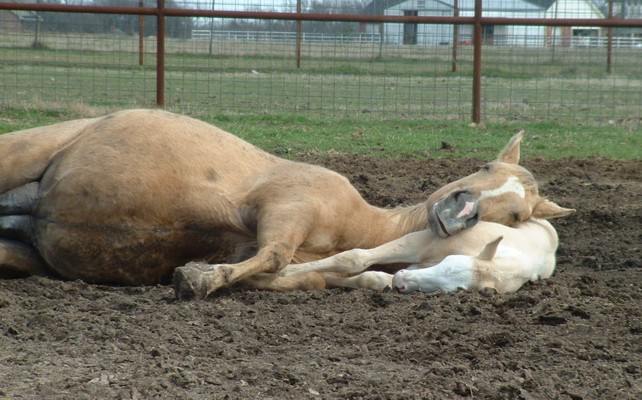If you’ve had a horse for, oh, five minutes or so, you’ve probably been offered some sort of opportunity to “help” your horse’s joint, usually by means of some product. There are three things that all joint health products seem to have in common.
 All of them claim to be fantastic
All of them claim to be fantastic- None of them have actually been shown to prevent osteoarthritis (inflammation and deterioration of a joint)
- All of them make horse owning more expensive (which is not something for which I have ever heard any horse owner express enthusiasm).
So, with those three things in mind, I thought we might want to briefly talk about horse joints, and then talk about a few things that you can do (besides buy something) that you might do to help keep them healthy: things that 1) Actually do some good and 2) Don’t cost you anything. Here goes.
What is a joint?
Simple. A joint is any place where two or more bones meet and are joined together.
Are there different kinds of joints?
Yes. That’s one reason why it can be difficult to talk about “joint health” as if it were one single thing. There are actually six types of joints, which is a great trivia fact but one that doesn’t otherwise do you or your horse any good. Basically, joints can be rigid, like the joints between the bones in the skull, or movable, like knees, hips, and shoulders. The moveable ones tend to get the most attention, which is understandable, because they tend to cause the most problems.
What are the important parts of a joint?
- Bones provide support for the entire weight of the horse’s body and helps to form the body shape that we call “horse.”
-

Different Kinds of Horses, Different Kinds of Joints
Many joints, especially those that move, have cartilage on the ends of the bones where they meet. Healthy cartilage helps the horse move by allowing the bones to glide over one another. It also protects bones by preventing them from rubbing against each other.
- Moving joints, and their cartilage, are surrounded by a joint capsule.
- On the inner surface of the joint capsule (as well inside the sheath that surrounds some tendons – another story), there is a synovial membrane that produces a synovial (joint) and maintain that fluid by removing wear-and-tear debris, and also be producing fresh joint fluid (which, among other things, has hyaluronan in it – a substance that often gets injected to horse joints).
- The synovial (joint) fluid is a thick, golden-colored liquid that lubricates joints and keeps them moving smoothly. Synovial fluid is a filtrate of blood plasma that enters the joint space from the small blood vessels of the synovial membrane. Joint conditions such as arthritis and infections can change how the synovial fluid looks and feels.
- Ligaments are fibrous structures that attach bone to bone. They can be both inside the joint or outside the joint and they usually serve to hold the bones together and help keep them stable.
HERE’S A PICTURE!
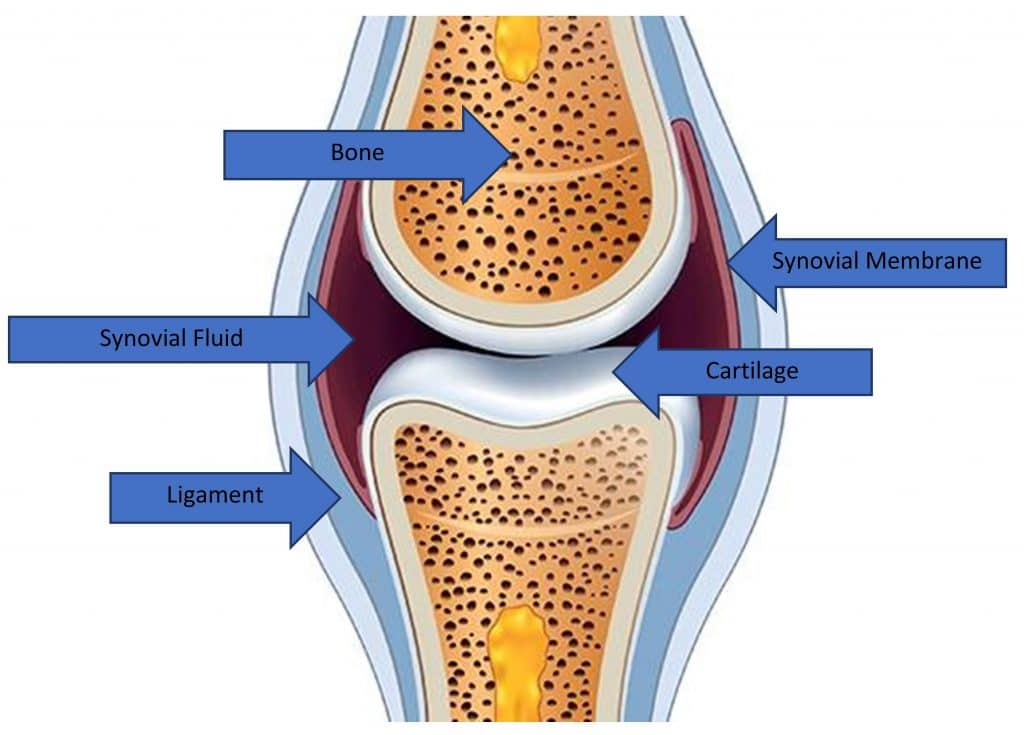
Seven (!) proven tips to keep horse joints (well, any joints, really) healthy
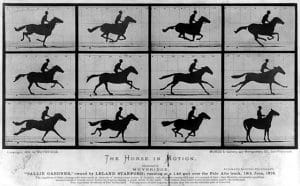 Keep your horse moving. Regular exercise helps your horse keep the muscles around joints strong, helps to decrease bone loss with age, and can help control both joint swelling and pain. Regular exercise also replenishes lubrication to the joint cartilage of the joint and helps keep limbs more supple. Otherwise stated, don’t let your horse stand around too much. The more free movement a horse has, the better it is for the health of his joints.
Keep your horse moving. Regular exercise helps your horse keep the muscles around joints strong, helps to decrease bone loss with age, and can help control both joint swelling and pain. Regular exercise also replenishes lubrication to the joint cartilage of the joint and helps keep limbs more supple. Otherwise stated, don’t let your horse stand around too much. The more free movement a horse has, the better it is for the health of his joints.
Keep him at a good weight. The more weight that your horse has to carry, the more stress there is on the joints. It shouldn’t be too hard to keep a horse at a good weight, especially if you pay attention to how much feed you’re giving him. Ideal body condition is where you can easily feel the ribs: maybe even see them a little bit. Seeing the ribs a little bit is OK, although you might occasionally run into someone who will tell you that your horse is “too thin.” Smile and ignore them.
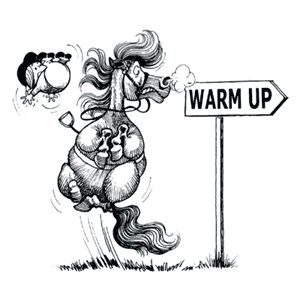 Warm up before exercise. Don’t take your horse out for an immediate gallop. Let him walk around for a while (my mare, Piper, walks for a minimum of 15 minutes before she gets to do anything else). Letting your horse warm up slowly gradually revs up his heart rate and body temperature, and gets blood flowing to the muscles. This can help decrease muscle soreness and lessen the risk of injury. By the way, stretching – popular in some circles – is not necessarily good, and, if you’re going to try to do it to your horse, it’s better to do it after your horse is warmed up.
Warm up before exercise. Don’t take your horse out for an immediate gallop. Let him walk around for a while (my mare, Piper, walks for a minimum of 15 minutes before she gets to do anything else). Letting your horse warm up slowly gradually revs up his heart rate and body temperature, and gets blood flowing to the muscles. This can help decrease muscle soreness and lessen the risk of injury. By the way, stretching – popular in some circles – is not necessarily good, and, if you’re going to try to do it to your horse, it’s better to do it after your horse is warmed up.
Lower impact exercise is better. Horses are big animals. Really big. That means that their joints take a lot of pounding. The more that you pound on the joints, the harder it is on them. That’s why, as much as you can, try not to work your horse’s joints too hard. Walking is better than running – in fact, in my opinion, the walk is the most underrated and underappreciated gait of the horse. Jumping every once in a while is fine – jumping every day is not. Piaffe, perhaps, but not persistently. Roll back some of the rollbacks. You get the idea. Your horse won’t forget how to do his job and his joints will stay healthier.
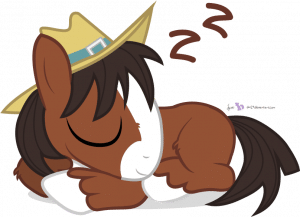 Rest stressed or injured joints. It’s just a fact that horses – particularly those horses that compete in various disciplines – can occasionally stress or strain their joints. It happens to human athletes at all levels, from the backyard softball players to professional soccer players (and pretty much everyone else). In the horse world, it’s tempting to give horses a shot of this, an injection of that, or a tablespoon of the other, in hopes of speeding up improving outcomes when a joint gets stressed (mainly by trying to reduce inflammation). However, the number one thing that injured joints need is time to rest and recover. No pill, powder, or potion can keep a joint from getting injured, nor can it replace the needed time for recovery. There are no miracles when it comes to joint health but there is a lot of unwelcome noise.
Rest stressed or injured joints. It’s just a fact that horses – particularly those horses that compete in various disciplines – can occasionally stress or strain their joints. It happens to human athletes at all levels, from the backyard softball players to professional soccer players (and pretty much everyone else). In the horse world, it’s tempting to give horses a shot of this, an injection of that, or a tablespoon of the other, in hopes of speeding up improving outcomes when a joint gets stressed (mainly by trying to reduce inflammation). However, the number one thing that injured joints need is time to rest and recover. No pill, powder, or potion can keep a joint from getting injured, nor can it replace the needed time for recovery. There are no miracles when it comes to joint health but there is a lot of unwelcome noise.
 Avoid repetitive stress. You can bend a paper clip once and it will be OK. Keep bending it again and again and it will eventually snap. Joints and joint tissues are like that, too. They’re pretty resilient, however, you can’t just keep pushing and pushing them. So, if you want your horse to jump, just don’t do it very often (you may need the reminders but he’ll be OK). Vary his exercise regimen, as well – it will keep his mind fresher and his body in better condition. Don’t keep pushing and pushing and pushing. It’s a recipe for disaster, both mentally and physically.
Avoid repetitive stress. You can bend a paper clip once and it will be OK. Keep bending it again and again and it will eventually snap. Joints and joint tissues are like that, too. They’re pretty resilient, however, you can’t just keep pushing and pushing them. So, if you want your horse to jump, just don’t do it very often (you may need the reminders but he’ll be OK). Vary his exercise regimen, as well – it will keep his mind fresher and his body in better condition. Don’t keep pushing and pushing and pushing. It’s a recipe for disaster, both mentally and physically.
Don’t believe everything you read
Obviously, you like to read, or you wouldn’t be here. But the horse world is full of joint solutions that aren’t. Here are a few things to look out for.
- In some circles, there is a belief that horses need periodic injections of various substances to keep their joints healthy. This is medically unnecessary. Horse joints are not like car engines and joint fluid is not the same as engine oil. The practice of injecting healthy horses for “maintenance” subjects horses to unnecessary risks with no known benefit, at a sure cost for the horse’s owner.
-
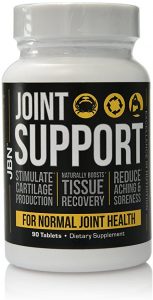
Just Say No
Joint supplements are rarely tested, neither for content nor effectiveness, and there is little evidence that they do anything, even after decades of use and advertisement. Save your money.
- Even FDA-approved medications promoted for joint health have little evidence for significant effects. In addition, now that they’re approved, no one is really bothering to test them anymore. A shot of this or that once a month doesn’t really do much of anything other than fatten the advertising budgets of the companies who sell them. There are also lots of unapproved medications in the horse world, and for those, the evidentiary situation is even worse (although the advertising situation is probably about the same).
- There are a variety of expensive experimental therapies out there (PRP, stem cells, etc.). None are FDA approved, none have a body of evidence showing their effectiveness, and all have the potential to cause harm. The things that they have in common is that they are expensive and none has been shown to either improve outcomes or shorten the time to recovery if a horse’s joint is injured. Ask for the evidence supporting a proposed therapy before you turn your horse into an experiment that you get to pay for.
 WHAT’S THE BOTTOM LINE?
WHAT’S THE BOTTOM LINE?
Honestly, the most effective strategies for joint health in your horse are relatively mundane: maybe even boring. However, no therapy or product has been shown to prevent or delay the progression of joint disease and no therapy or product can prevent the predictable bad results of overuse or mismanagement. When it comes to the health of your horse’s joints, why not just be boring, do a few things that have been shown to be effective, and save some money in the long run?

